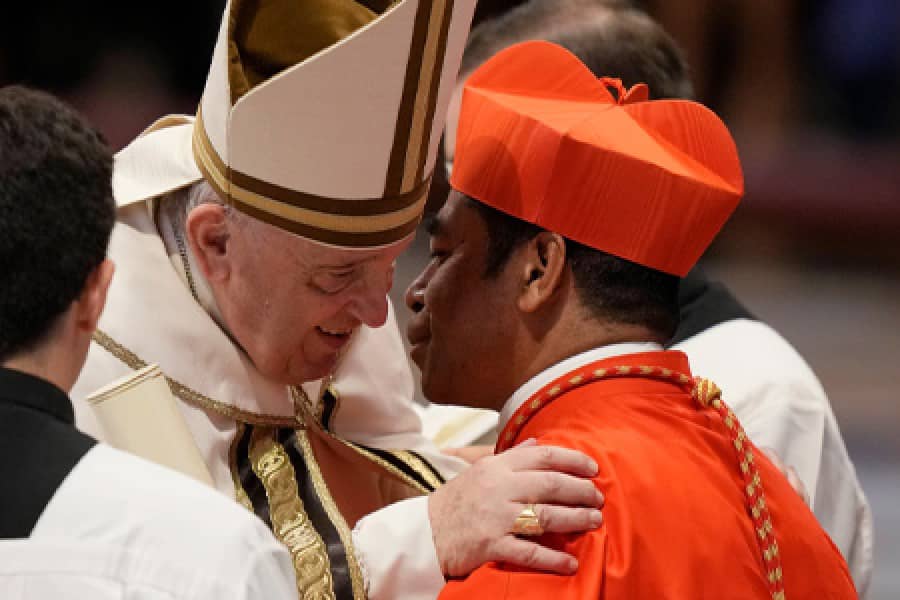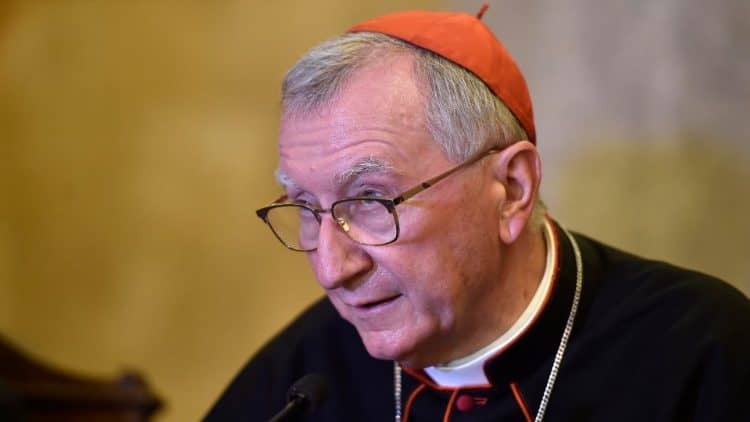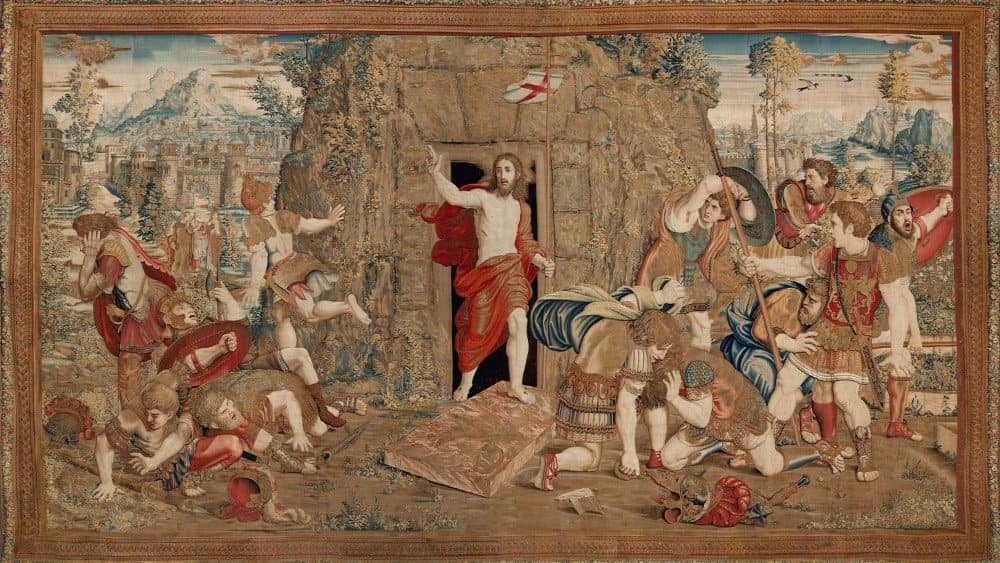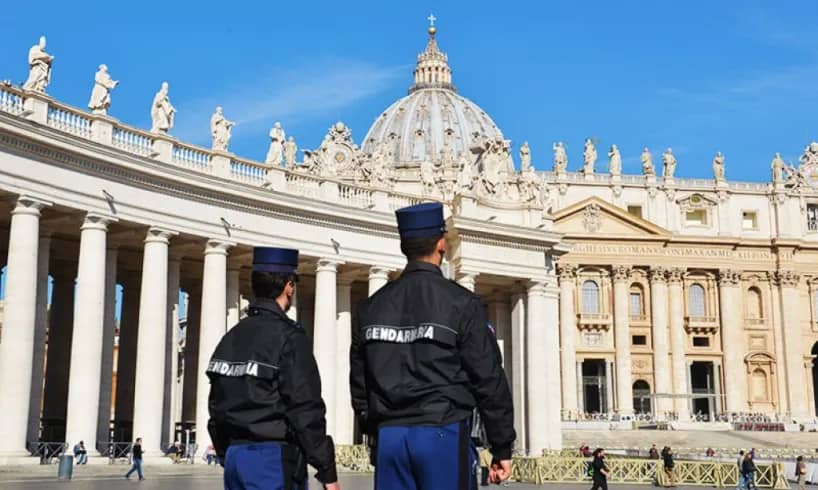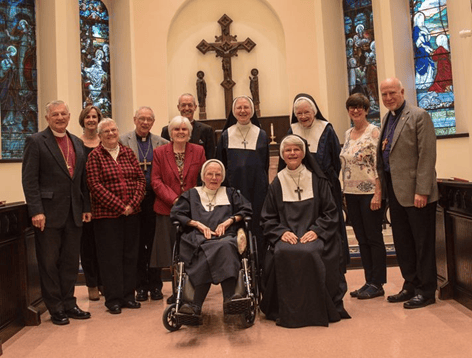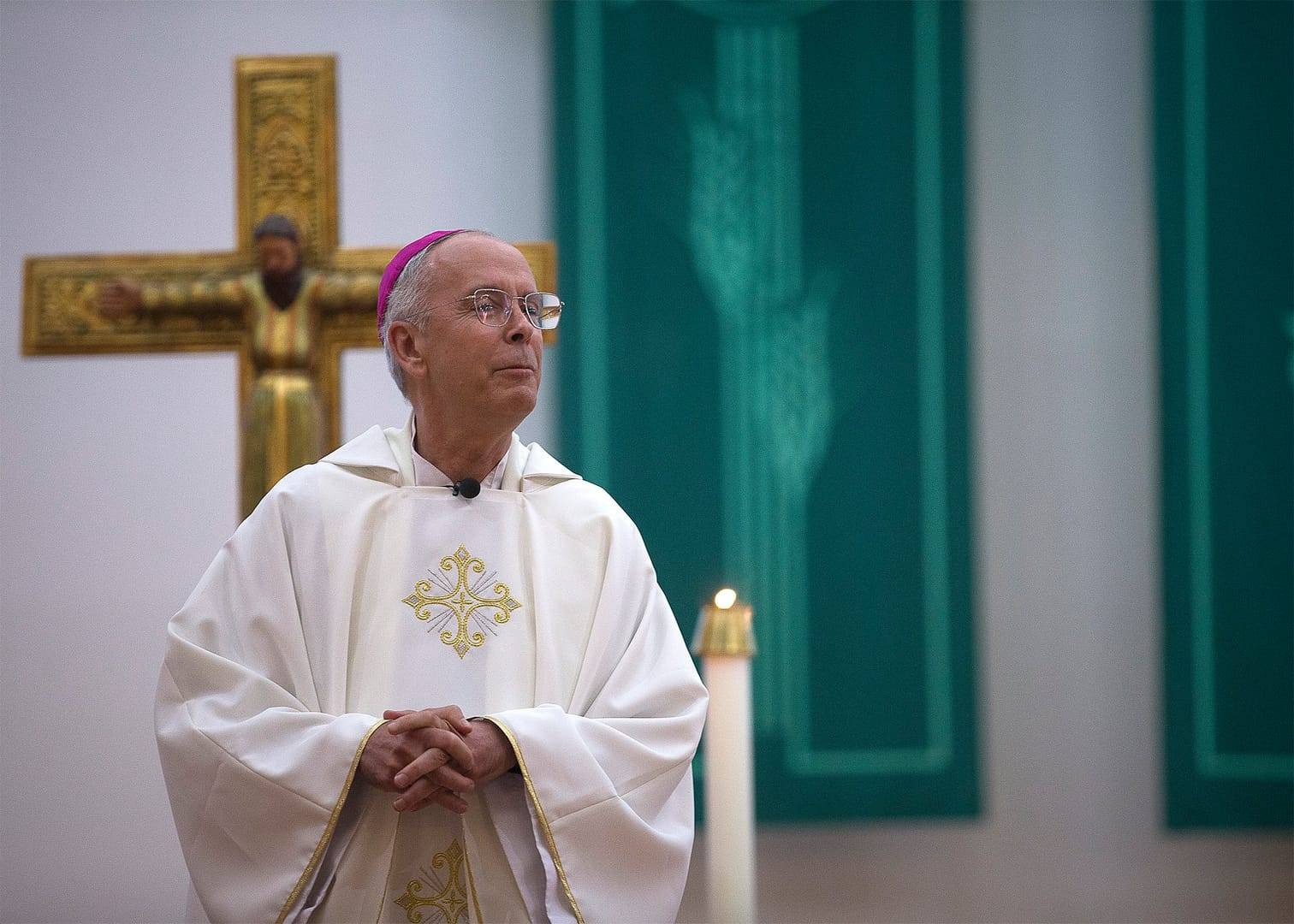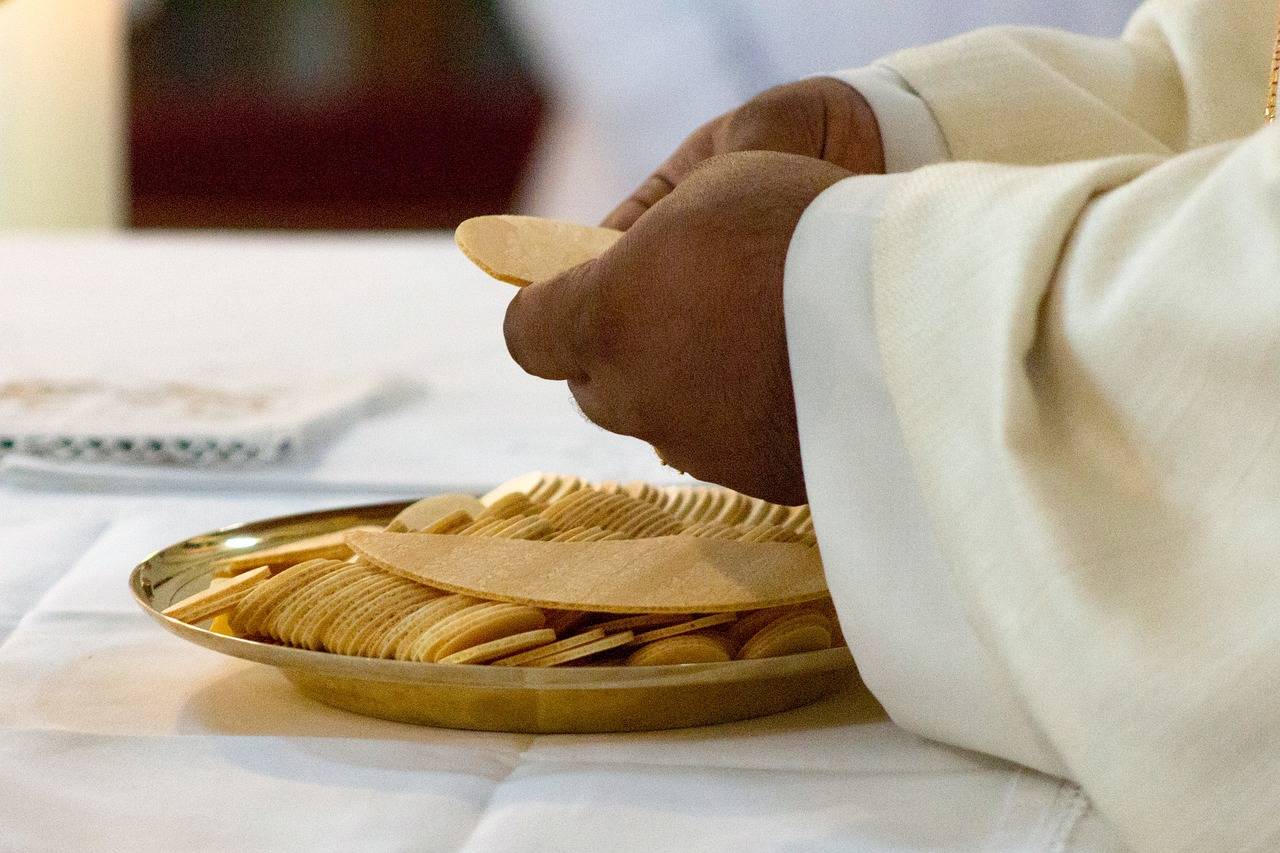MAHANOY CITY, PA — When Blessed Teresa of Calcutta becomes St. Teresa of Calcutta next month, bells will ring all over the world, and some of that joyful clanging will be at a church in a coal region of Pennsylvania where the Albanian nun left an indelible impression during a 1995 visit.
The time of canonization is expected to be about 10:30 a.m. Rome time, which means the bells will be chiming in Mahanoy City at 4:30 a.m., give or take a few minutes.
“I’m not sure our neighbors are going to be happy,” said Donna DiCasimirro, head of the canonization activities committee for Blessed Teresa of Calcutta Parish. “But it’s from that minute on, not later in the day when we do our own celebration, she will be a saint.”
Not that the church is waiting until the Sept. 4 canonization to celebrate. It has a long list of events scheduled, from a peace rally to a nine-day prayer to a Mass celebrated by Bishop John O. Barres.
No one is more excited about Mother Teresa’s elevation to sainthood than the congregation at Blessed Teresa.
In 1995, at the end of a tour of the United States, the Nobel laureate attended Mass at the parish, then known as St. Joseph’s, speaking for 15 minutes about love for the poor and mercy for the most vulnerable.
She was 84 at the time, unmistakable with her careworn face and the blue-and-white habit of the order she founded, the Missionaries of Charity. The faithful lined the streets of the Schuylkill County town and packed the church to see her.
Mother Teresa, born Agnes Gonxha Bojaxhiu, concluded her tour in the borough because she wanted to visit the sisters of the Missionaries of Charity convent that opened there in 1991.
The sisters remain — about a half-dozen at any given time, living a contemplative life and venturing out only to minister to the poor.
The church changed its name to Blessed Teresa of Calcutta when it absorbed five other churches during a 2008 diocesan consolidation. Since then, the parish has offered a prayer at every weekend Mass for its namesake’s canonization.
DiCasimirro said one of the first things the canonization committee did when it began meeting in February to plan activities was put out a call for a new prayer to the soon-to-be-saint.
Submissions were presented to the pastor, Father Kevin Gallagher, and Deacon Dave Henninger, who combined elements of two into a single prayer.
“That will be the forever part of our celebration,” DiCasimirro said.
Events were to begin at 6 p.m. Sunday at the church, when the parish youth group, Action, holds a prayer service for peace.
On Monday through Thursday at 6 p.m. the church will hold Camp Calcutta for children — 90-minute sessions focusing on Mother Teresa’s long ministry to the desperately poor people of that Indian city.
On Friday, the novena begins. The 30-minute period of prayer and brief talks will be offered at the church every day for nine days. All novena events begin at 6:30 p.m. except those on Saturdays (Aug. 27 and Sept. 3) when they will follow the 4 p.m. Mass.
On canonization day, children dressed in blue and white will process to the church from the chapel four blocks away prior to the special 3 p.m. Mass celebrated by Barres and nearly two dozen priests.
The procession will begin at 2:30 p.m. Along the way, teens will pass out fruit in imitation of Mother Teresa, who often gave fruit to the poor.
The celebration will conclude with the unveiling of the new church name and a banquet in the social hall.
The community is invited to participate in all events but the banquet, which will require tickets because of space constraints.
That DiCasimirro and many others in the parish will see the canonization of someone they once saw in person is relatively unusual, because the canonization process can take decades.
Normally, a cause for canonization can’t be opened for five years after a person’s death, but for Mother Teresa, Pope John Paul II reduced the period to two years. For John Paul himself, canonized two years ago, Pope Benedict XVI eliminated the entire waiting period.
The process must also include the confirmation of miracles to show the person has intercessory power before God. Teresa’s intercession was cited in recovery of a Brazilian man who was comatose and close to death with a viral brain infection and abscesses. He awoke as he was being prepared for emergency surgery and, within hours, showed no sign of illness.
DiCasimirro said Mother Teresa is an ideal saint for times as troubled and divisive as these.
“The woman truly believed in love,” she said. “She didn’t care what faith they were. She knew people needed to be helped. That’s something we desperately need to remember in today’s world. God made you and the person next to you and the person you’re not necessarily happy with.
“We are supposed to love one another — there is no reason not to.”







